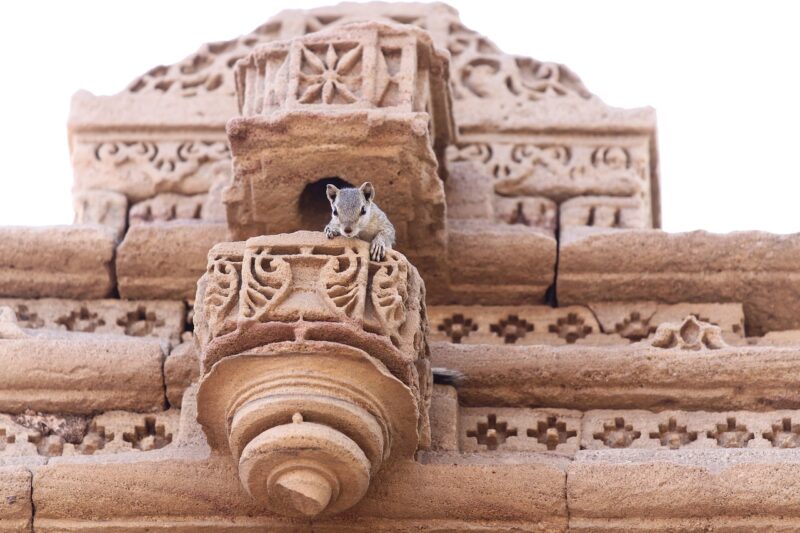How Ancient Builders Aligned Their Monuments With Celestial Events to Honor Their Gods
November 17, 2024

From the towering pyramids of Egypt to the intricate stone circles of Britain, ancient builders understood the profound connection between the earth and the sky. Throughout history, civilizations have meticulously aligned their monumental structures with celestial events—sunrises, sunsets, solstices, and lunar phases—to create landmarks that not only served practical purposes but also honored their gods. This article delves into some of the world’s most iconic structures, exploring their astronomical alignments and the cultural significance behind these extraordinary feats of engineering.
1. The Significance of Celestial Alignments
Celestial events have always played a fundamental role in the lives of ancient civilizations. Many societies relied on the sun, moon, and stars for agricultural cycles, navigation, and ritual practices. Aligning monuments with these celestial markers was not merely a display of architectural skill; it was deeply rooted in cultural and religious practices.
For these ancient people, the heavens were often seen as a reflection of the divine. Aligning structures with celestial events allowed them to connect their earthly experience with the divine realm. Here are a few key reasons for astronomical alignments:
- Agricultural Calendar: Many cultures used celestial events to determine planting and harvesting times, aligning their monuments with the solstices and equinoxes to mark these significant periods.
- Religious Rituals: Many ancient peoples viewed celestial bodies as manifestations of their deities, with alignments serving as a way to honor and communicate with their gods during sacred rituals.
- Navigational Aid: Celestial navigation was crucial for many ancient cultures, providing guidance during travel and exploration, and aligning structures offered reference points on the horizon.
As we examine some renowned civilizations and their monumental structures, we gain insight into how celestial alignments shaped their architectural achievements and spiritual beliefs.
2. The Pyramids of Giza: A Celestial Nexus
The Great Pyramid of Giza, built around 2580-2560 BC, is one of the most iconic examples of ancient architecture aligned with celestial events. Constructed as a burial monument for Pharaoh Khufu, the pyramid’s precise alignment to true north and its orientation along the cardinal points demonstrate an extraordinary understanding of astronomy.
The pyramids’ alignment with the stars is particularly fascinating. The three main pyramids at Giza are thought to align with the three stars of Orion’s Belt, which was associated with Osiris, the god of the afterlife. This celestial alignment reflected the Egyptians’ belief in the afterlife and the connection between the heavens and the earth.
Additionally, the pyramid’s entrance is oriented toward the north celestial pole, and the Grand Gallery features a shaft that points toward the constellation of the Orion, further emphasizing the builders’ reverence for celestial bodies.
3. Stonehenge: A Portal to the Cosmos
Stonehenge, the prehistoric monument located in Wiltshire, England, is famously aligned with the movements of the sun. Dating back to around 3000 BC, this ancient structure is thought to have served as an astronomical observatory and a sacred site for rituals, particularly during the summer and winter solstices.
During the summer solstice, the rising sun aligns perfectly with the heel stone and the entrance of the monument, creating a stunning visual spectacle. On the opposite side, the winter solstice marks a time when the sun sets between the stones, casting long shadows that align with the Neolithic landscape.
This alignment emphasizes the importance of solar cycles in the agricultural calendar and suggests that ancient peoples gathered at Stonehenge for ceremonial practices, reinforcing their connection with the celestial realm.
4. The Mayan Pyramids: Astronomy in Architecture
The ancient Maya civilization, known for its advanced understanding of astronomy, decorated its landscapes with numerous structures aligned with celestial bodies. Cities like Chichen Itza and Tikal house pyramids that serve as astronomical observatories, meticulously crafted to track celestial events.
The Pyramid of Kukulcán in Chichen Itza is renowned for its serpentine shadow that casts down its stairs during the equinoxes, creating the illusion of a serpent slithering down. This stunning visual representation aligns with the Mayan deity Kukulcán, further illustrating the intricate connection between their architecture and their belief system.
Additionally, the Mayan calendar consisted of sophisticated cycles based on solar and lunar events, indicating how deeply astronomy influenced their culture and monumental building techniques.
5. Angkor Wat: A Temple of Celestial Alignment
The Angkor Wat temple complex in Cambodia is not only a marvel of architecture and artistry but also serves as a testament to the Khmer Empire’s sophisticated astronomical knowledge. Completed in the early 12th century, Angkor Wat was constructed to represent the cosmos in stone; its layout reflects the structure of the universe.
The temple’s orientation is aligned with the western horizon, where the sun sets during the equinoxes. This alignment suggests a connection between the temple and the cycle of life, symbolizing the transition from day to night.
Moreover, the central tower is meant to represent Mount Meru, the center of the universe in Hindu and Buddhist cosmologies. Thus, the entire temple complex serves as a model of the universe, emphasizing the spiritual beliefs of the Khmer people.
6. The Nazca Lines: Earthly Messengers to the Gods
Discovered in the arid plains of Peru, the Nazca Lines are a collection of giant geoglyphs etched into the desert floor, dating from 500 BC to 500 AD. These designs include animals, plants, and geometric shapes, some of which can only be fully appreciated from the air.
Research suggests that these lines may have astronomical significance, possibly serving as a celestial calendar or markers for solar alignments. For instance, certain lines align with the setting sun during solstices, indicating that they may have been used to track solar events for agricultural rituals or ceremonies.
The Nazca people may have viewed these massive creations as offerings to the gods, hoping to invoke favorable conditions for their crops or appease celestial deities.
Conclusion: A Cosmic Legacy
The architectural achievements of ancient builders reflect their profound understanding of celestial movements and their desire to connect with the cosmos. By aligning their monuments with astronomical events, these civilizations honored their gods and embedded their cultural beliefs into the very fabric of their landscapes.
As we explore these ancient structures today, we gain a deeper appreciation for the ingenuity and spirituality of our ancestors. Their legacies continue to inspire, reminding us of the timeless quest to understand our place in the universe and the divine influences that shape our lives.
In examining the celestial alignments seen in diverse cultures, we see that the interplay between architecture, astronomy, and spirituality remains a central theme in human civilization, as relevant today as it was thousands of years ago.







